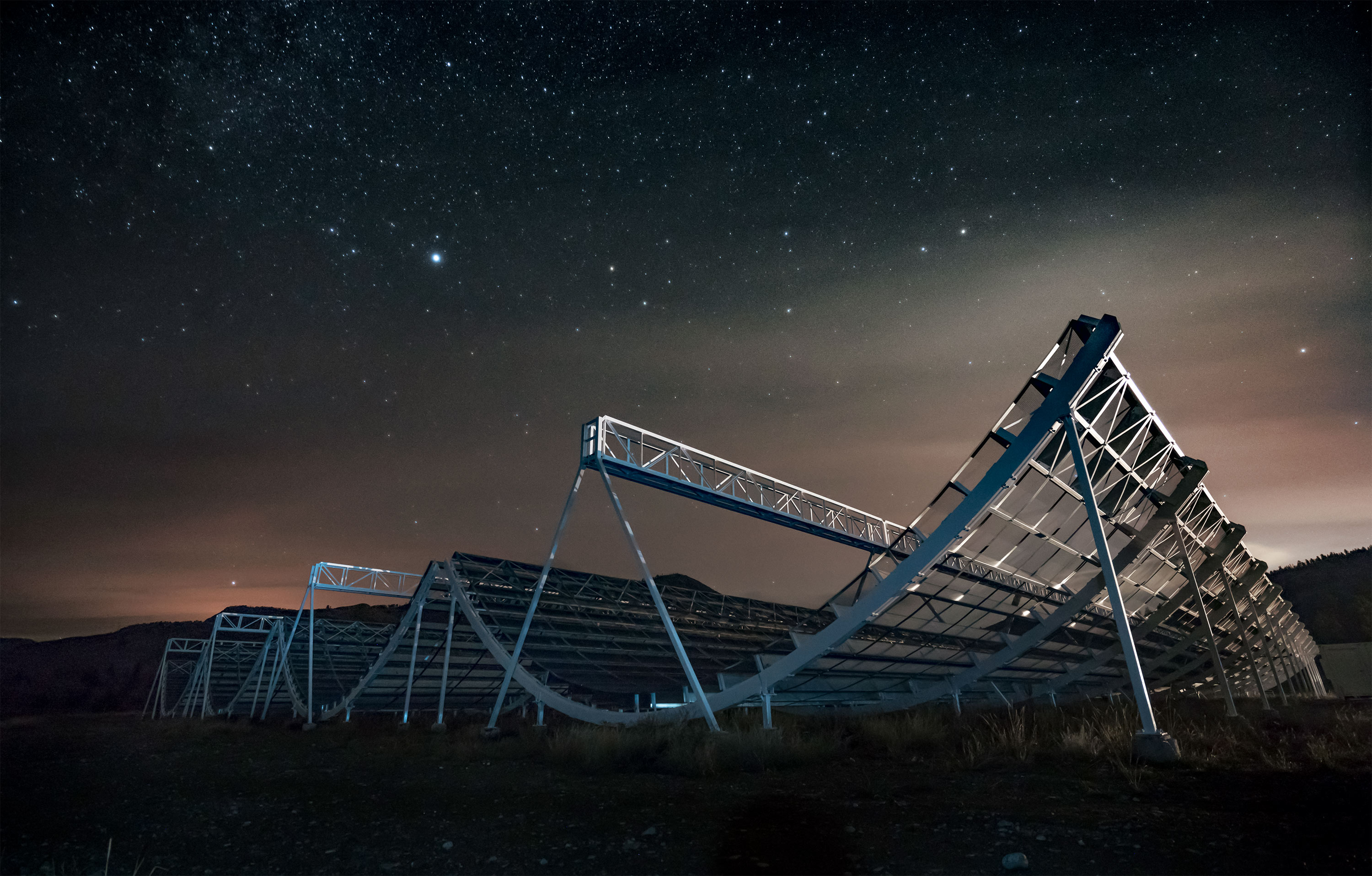A strange rhythm in space

Far outside our galaxy, 500 million light-years away, intense, random bursts of radio waves have been flashing for four days at a time. Then 12 days of inactivity follow before the curious 16-day cycle begins again. Observed consistently over 500 days by a Canadian-led team of astronomers, including researchers at MIT, the phenomenon is an astrophysical mystery.
Fast radio bursts, or FRBs, are short flashes of radio waves thought to be the product of small, distant, extremely dense objects, though exactly what those objects might be is unclear. Since the first FRB was observed in 2007, astronomers have catalogued over 100 of them from distant sources scattered across the universe. But the new source, which the team has designated FRB 180916.J0158+65, is the first to produce a periodic, or cyclical, pattern.
“It’s the most definitive pattern we’ve seen from one of these sources,” says Kiyoshi Masui, an assistant professor of physics in MIT’s Kavli Institute for Astrophysics and Space Research. “And it’s a big clue that we can use to start hunting down the physics of what’s causing these bright flashes, which nobody really understands.”
Masui is a member of the CHIME/FRB collaboration, which operates and analyzes the data from the Canadian Hydrogen Intensity Mapping Experiment, or CHIME, a radio telescope in British Columbia that stares fixedly at the entire sky and uses digital signal processing to pinpoint the region where incoming radio waves are originating. From September 2018 to February 2020, CHIME picked out 38 bursts from FRB 180916.J0158+65, which the astronomers traced to a star-churning region on the outskirts of a massive spiral galaxy.
The researchers speculate that the bursts may be coming from a single compact object, such as a neutron star, that is both spinning and wobbling—a phenomenon known as precession. Another possibility involves a binary system, such as a neutron star that emits radio waves and circles another neutron star or black hole in an eccentric orbit. Or the strange rhythm could be caused when a radio-emitting source orbits a star that sends out a wind or cloud of gas, which would periodically magnify the source’s radio emissions.
Perhaps the most exciting possibility is that this FRB and others may originate from magnetars—a still-mysterious type of neutron star thought to have an extremely powerful magnetic field. In late April, CHIME picked up a signal that looked like a fast radio burst coming from a flaring magnetar some 30,000 light-years from Earth. If confirmed, this would be the first FRB detected within our galaxy, as well as the most compelling evidence of magnetars as a source of these cosmic sparks.
Keep Reading
Most Popular
Large language models can do jaw-dropping things. But nobody knows exactly why.
And that's a problem. Figuring it out is one of the biggest scientific puzzles of our time and a crucial step towards controlling more powerful future models.
The problem with plug-in hybrids? Their drivers.
Plug-in hybrids are often sold as a transition to EVs, but new data from Europe shows we’re still underestimating the emissions they produce.
Google DeepMind’s new generative model makes Super Mario–like games from scratch
Genie learns how to control games by watching hours and hours of video. It could help train next-gen robots too.
How scientists traced a mysterious covid case back to six toilets
When wastewater surveillance turns into a hunt for a single infected individual, the ethics get tricky.
Stay connected
Get the latest updates from
MIT Technology Review
Discover special offers, top stories, upcoming events, and more.